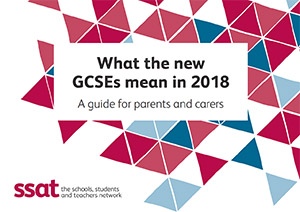
Did you know? You can access 100s of resources by becoming an SSAT member.
Login or enquire today.
What the new GCSEs mean in 2018 – a guide for parents and carers
This year, year 11s sitting GCSEs in the summer term 2018 were the first group to sit the new GCSEs in a range of subjects, following the introduction of new GCSEs in English and maths in 2017.
Students will receive a number grade from 9-1 in most subjects and a letter grade in any old-style GCSEs they sit. This is the same across the country, and all year 11 students will receive the same mixed set of results. This change is the same across all exam boards. The new GCSEs cannot be easily compared to the old ones – while we’re able to draw some broad comparisons between the old and new grading systems, the new GCSEs are fundamentally different qualifications. The government are working with schools, colleges, universities and businesses to help explain the changes – so don’t worry that this will affect your child’s future chances. Again, all students nationally are in the same position.
This guide is intended to help make sense of the changes for these students’ parents, carers and families.
SSAT Membership
Join SSAT to gain free access to our widest range of CPD, programmes, tools and resources.

